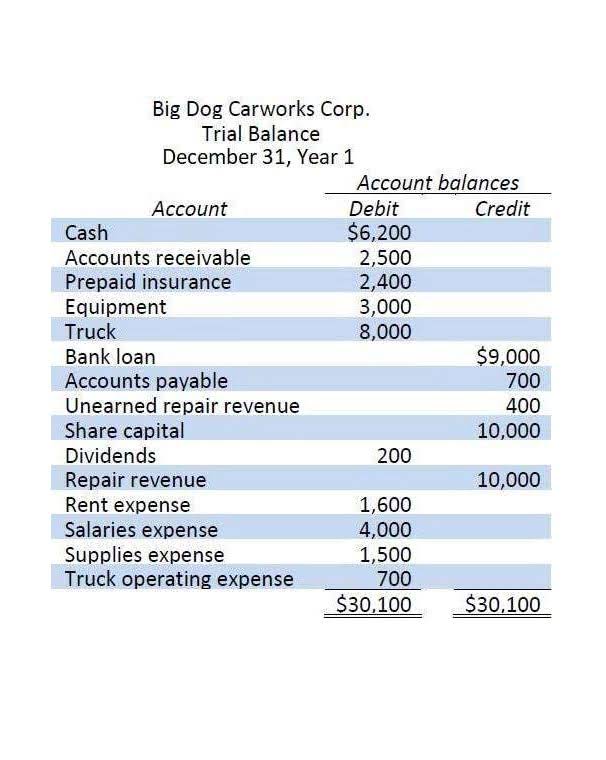Content
- Prepare For Next Closing
- How To Use Financial Automation To Improve Your Month
- How To Achieve The Perfect Month End Reconciliation Process
- What Is The Month End Close?
- How Does Automation Improve The Month End Close Process?
- Organize And Review Financial Statements
- Definition Of Physical Inventory Sample Counting
- Account Reconciliation

Managers who are responsible for a budget line or cost center may play an essential role in the processing of supplier invoices but often lack visibility of the overall AP process. Research from Deloitte explains that in order to have more real-time company data, you should start by isolating processes that tend to happen only once a month and try to push them to once a week or once a day. After identifying those tasks, companies should look into what technology can support them. The knock-on effect of aspects of the financial close not being completed in the right order can be catastrophic. Delayed tasks are the cause of much frustration, bearing in mind the very real pressure for organizations to work to very tight timeframes to close the books. Close checklist – a checklist of all the processes that need to be executed along the record-to-report journey, typically varying from 300 to 1,200. They need to occur within a tight timeframe and there are lots of dependencies, working across geographies and timeframes – requiring sophisticated project management capabilities to manage that checklist.
Once the accounting team is satisfied that the general ledger is accurate, you are ready to prepare financial statements. Many organizations can generate these statements through their accounting systems, while others will need to run reports and compile data, which is often transferred to an Excel document. Another useful review is to compare actuals to budget using the statement of activities .
Prepare For Next Closing
After hearing a month end process flowchart provides for your organisation, you’re likely wanting to create your own. And because fixed assets are generally larger purchases, they can depreciate in value over time. To compare your petty cash fund to your records, physically count the leftover cash in your fund. Or, you might have forgotten to record the used petty cash in your books.

This is because the automated system is designed to conduct reconciliation according to your desired frequency and standardises the process across your organisation. If you think about the amount of transactions that happen on a daily basis within your business, it’s easy to see how this process can become complex. Even if there aren’t many transactions, timing can play a role in complicating the process.
How To Use Financial Automation To Improve Your Month
And this is the case even though many of the problems that occur in the last mile are due to first mile issues. It is this first mile where there is the potential to make huge improvements in the efficiency, speed and accuracy of the entire record-to-report process. Also, any error in the financial system has a significant impact on a company’s reputation. Since the goal is to create timely and accurate financial statements, any procedures that can be integrated into the daily operations will facilitate a quicker monthly closing process. Ideally activity should be recorded when it happens, rather than waiting until the end of the month.
Keeping track of revenue from product sales and services ensures that your business is on track with your forecasted ARR. Tools like SaaSOptics automate revenue schedules through CRM integrations and sync invoices to your general ledger chart of accounts structure so you can handle revenue recognition with minimal manual input. Calendar systems like ClickUp, CoSchedule, or Monday.com give all necessary teams visibility into what the marketing team needs regarding vendors for upcoming events or collateral for product launches and announcements. The calendar serves as a timeline for confirmations and setting budget expectations, which can be accounted for as you approach your month-end close or forecast future closes. That means that by the time they finish last month’s reporting, it’s nearly time to start the whole cycle again for the next accounting period. Teams need to get out of this vicious cycle by mapping out a more streamlined timeline. With workflow and integration to related balance sheet reconciliations but automates the creation, posting, and certification of a significant portion of a company’s entries.
How To Achieve The Perfect Month End Reconciliation Process
When many reports are printed, you can choose to include these year-end entries or not, depending on the desired results. The G/L system uses a control month and year to govern the posting of debits and credits to the proper time periods. This control feature is maintained either by running the end-of-month processing procedure or by updating the month and year directly in Chart of Accounts Maintenance. Month-end is not a calendar process like other general ledger functions—you dictate when month-end occurs. Month-end is processed only after all general ledger functions such as reconciling and posting are complete for the month, and you have decided on final positions for financial statements. In calendar terms, this point may not occur until well into the following month.
- Two accounting periods/fiscal years will be open in the general ledger for certain days in July.
- APQC found that companies who adopted a standard chart of accounts with clearly defined naming and numbering conventions were able to cut an average of two days off their monthly close process.
- Rather than spending time creating or updating yet another spreadsheet, your team can devote their efforts to higher-value-add activities within the organization.
- The corporation number for which the month-end processing will be done.
- Ideally activity should be recorded when it happens, rather than waiting until the end of the month.
- Working papers are your reference for the month end closing procedure.
If you’re a small business owner who feels the month end close process is a mountain of tedious admin, you’re not alone. The monthly financial close is an important but time-consuming process that entrepreneurs don’t look forward to. The month-end close is the collection of financial accounting information, review, and reconciliation of records each month. This is a reporting requirement for some companies, and helps businesses keep accurate records throughout the year. The following is a month end close checklist to go over if you find yourself in charge of the monthly closing process. The financial accounting role goes beyond just transactions, covering income cash, bank loans, savings accounts, monthly expenses, and other essential parts that impact the entire organization. A misplaced invoice or statement can result in curious losses that you won’t be able to account for.
What Is The Month End Close?
Accounting can use technology to proactively govern their intercompany process from transaction initiation through netting and settlement. End-to-end intercompany solutions facilitate the process with defined workflows, embedded controls, and automation. Since our founding in 2001, BlackLine has become a leading provider of cloud software that automates and controls critical accounting processes.
Using financial automation ensures that you avoid errors in the reconciliation of balance sheets that result from copy and pasting formulas and month-end balances. Month-end close processes are time-consuming, and tracking the process’s status or progress is sometimes done poorly or not done at all. Month-end close software improves the process, making it transparent with real-time snapshots of the process’s progress and status. This speeds up all the activities, including corrections and the workflow. With an effective automation system, companies can cross-check balances from bank statements to their ledgers. You can reduce the risk of human error by automating data flow and streamlining many of the reconciliation steps. If you work in finance, you’ll probably agree that speeding up the headache that is the month-end close wouldn’t be such a bad thing.

Good communication enables effective long-distance collaboration and teamwork. Spend the time upfront to develop a clear and concise plan to avoid miscommunications down the road. Report and assemble necessary documentation and financial statements for internal and external audits. We know you want to just get on with your close, reporting, and personal tasks. So, we promise, the time you spend reading this will make your personal and professional life more efficient and less stressful. Manage your time and be well-organized.“It’s important to be efficient and learn to meet closing deadlines,” said Samantha Villani, Financial Services Audit Senior at KPMG LLP. “Use an Outlook calendar, and set individual work goals for the day and the week.
How Does Automation Improve The Month End Close Process?
Financial reports and statements are incredibly important for providing an accurate view of the company’s financial data and informing future strategies. Technology can also be used to standardize account reconciliations and automate the creation and processing of the thousands of journal entries businesses inevitably work with. The elimination of manual data entry is usually the first selling point accounting teams look forward to, but the advantage here extends beyond that.
If there’s a bug that no one on the finance team can figure out, finance has to call on IT. A better way to do consolidation, and thus speed up https://www.bookstime.com/ the month-end close, is to have an FP&A platform that integrates with various ERP systems and can pull data from them on an ongoing basis.
It is impossible to automate operations unless a business has a good grasp of dependencies, task time, and other factors. Presenting a complete and accurate representation of the organization typically requires monthly journal entries for accrued expenses, amortization, depreciation, and other activity. In most cases, accounting systems are able to automate recurring journal entries.
- The value of your AP invoice data is in collecting it and converting that raw data into meaningful reports.
- With account reconciliations, you’ll spot mistakes in your financial data and fraudulent transactions (if any!).
- If an auditor wishes to review any of your processes, they can easily do so as the process is mapped out and actions and approvals are all recorded.
- However, there are solutions in place to shift those to a pre-approved model whereby purchase requisitions lead to the generation of purchase orders for indirect spend, allowing for control and visibility.
- But it’s a completely different story if the numbers are late—or wrong.
Routable does the data entry for you, preventing errors and saving work down the line. The platform also makes it easy to import invoices in whatever way works best for your business, whether that’s forwarding bills through email, uploading them or bulk-processing thousands of payments through API. Accounting teams should review the monthly closing process, develop a checklist of tasks to ensure it goes smoothly and correctly, follow best practices, and use the software tools available to them. Traditionally the CFO and finance team use data from the ERP to report on financial metrics.
Definition Of Physical Inventory Sample Counting
This entails taking into account every transaction that month, adjusting and finalizing your balances and producing reports to share key metrics with your management team. While it’s unlikely that anyone will ever mistake closing the books for fun, it’s also true that the month-end close process doesn’t have to be the stuff of nightmares. Each item on the list is often done through a separate spreadsheet by isolated individuals specific to their departments. When done the traditional way, these tasks are invisible to the wider finance function, and it can be difficult to integrate the work with the monthly closing process as a whole.
Account Reconciliation
Adapt and innovate with a hyperconnected Accounting function and give everyone the insights and freedom to thrive by connecting your data, processes, and teams with intelligent automation solutions for accounting needs. It’s time to embrace modern accounting technology to save time, reduce risk, and create capacity to focus your time on what matters most. Make the most of your team’s time by automating accounts receivables tasks and using data to drive priority, action, and results. Monitor and analyze user performance, ensuring key actions quickly. Fixed assets are long-term items that don’t easily convert to cash.
It would be best to prepare a monthly calendar to help you with the closing of your books for the next month. You can use your calendar to plan out the times and dates to collect financial reports from the different departments when to record the transaction, and finally close the books.
Of all the processes the finance team covers, the month end close process especially deserves your attention. If you work in an accounting department you know that financial month end closing process statements certainly matter, but just as important is a consistent, up-to-date record so no invoices, receipts or other important documentation get left behind.
When it comes time for the month-end close process, your AP data will be in tip-top shape, freeing your team to focus on other priorities to close the books and get ready for the month ahead. Produce financial statements, including the general ledger, profit and loss statements and balance sheet. Software can generate these documents automatically, saving time each month.



























